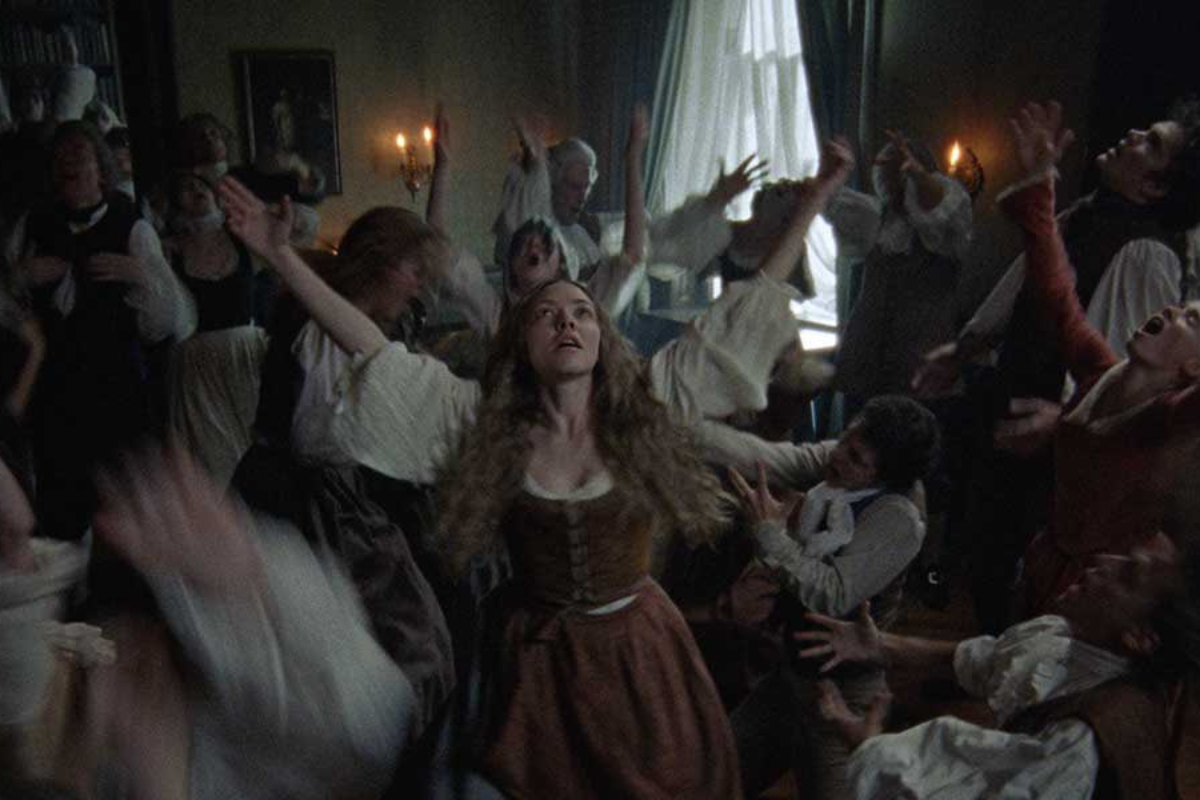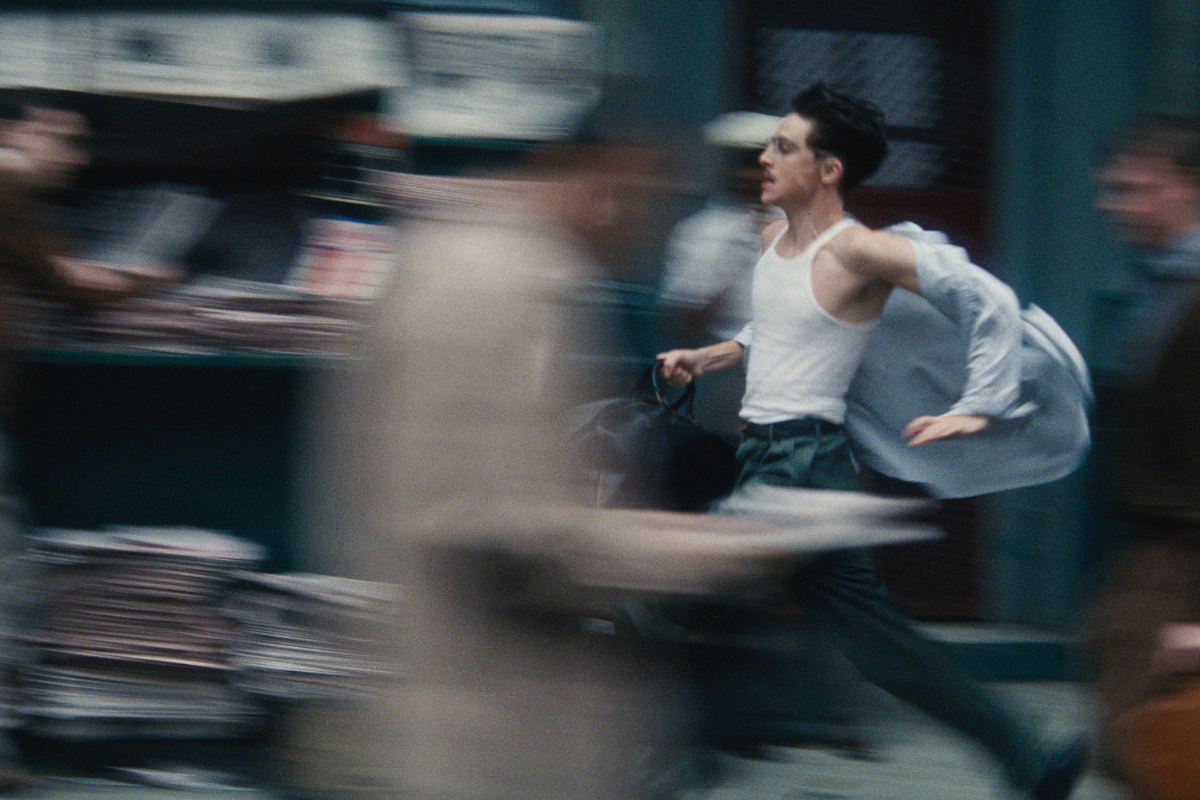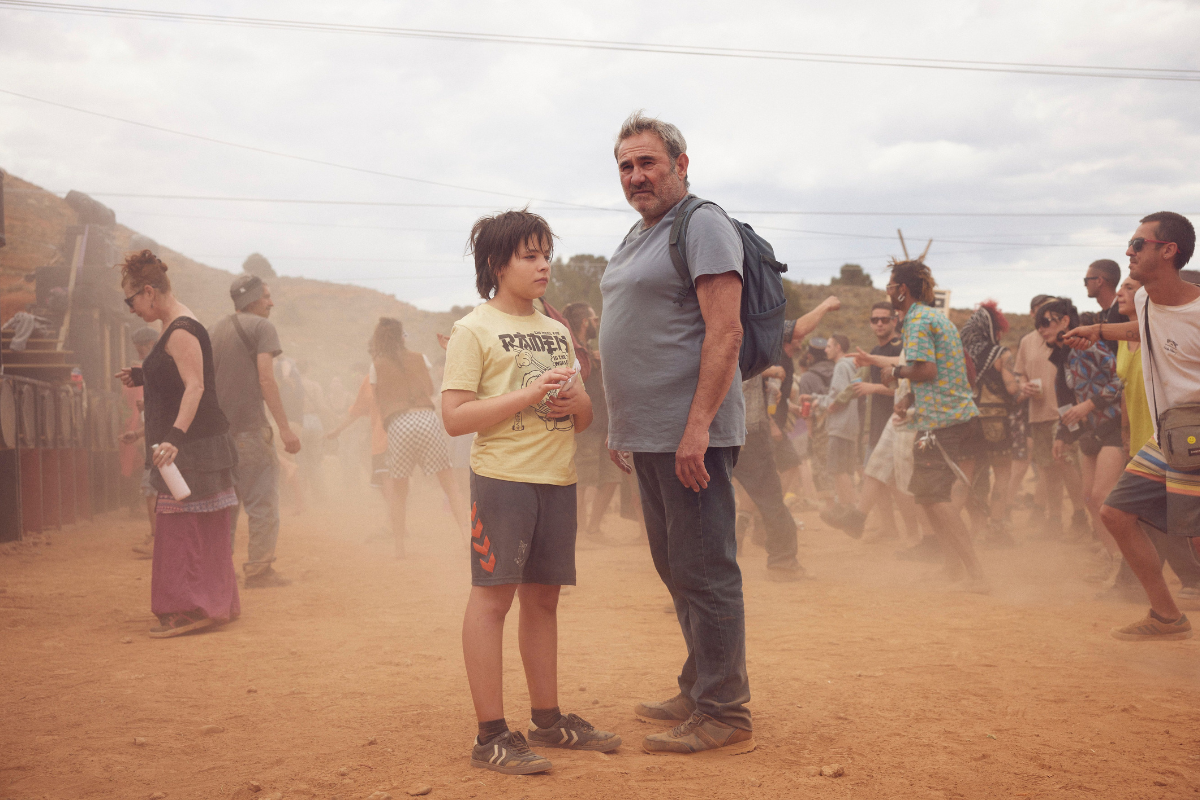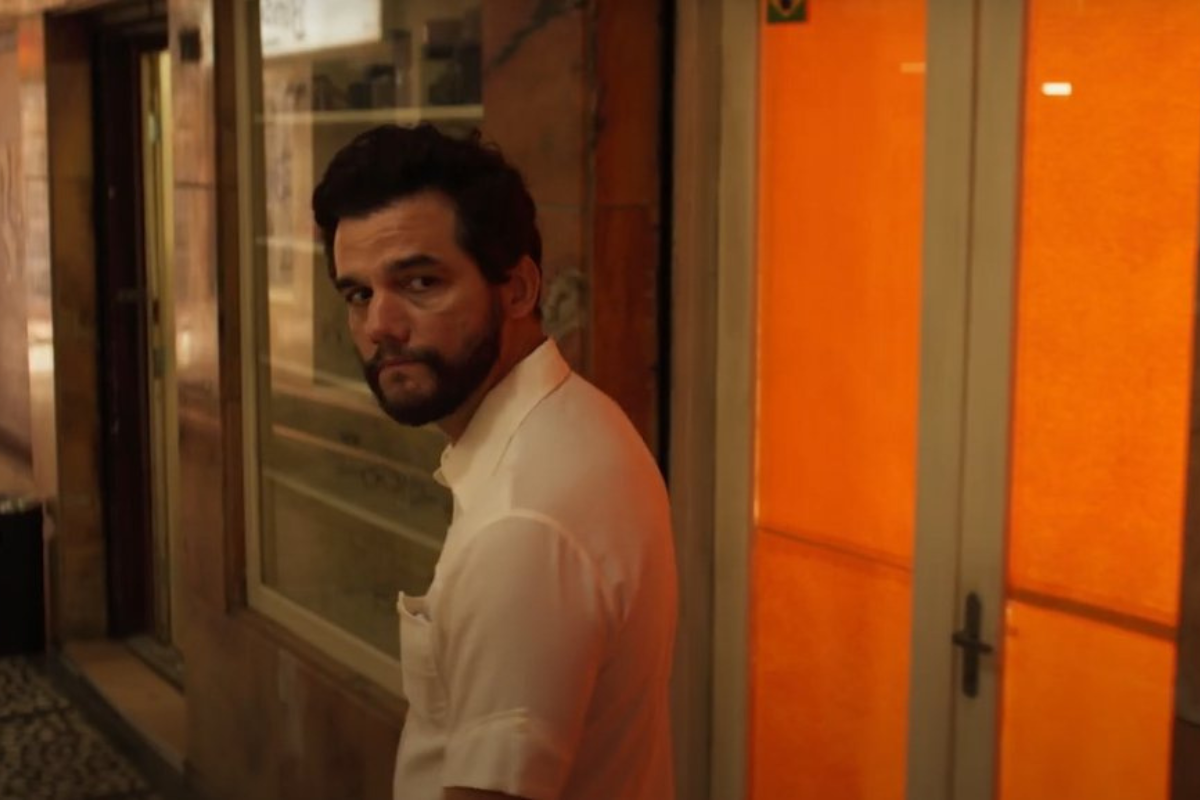UNDERSTANDING SCREENWRITING: Connections
Script contributor Tom Stempel is connecting three films you might not connect: ‘Licorice Pizza,’ ‘Rifkin’s Festival’ and ‘The Worst Person in the World’.
We Have Dialogue, But We Still Need Faces.
Licorice Pizza (2021. Written by Paul Thomas Anderson. 133 minutes)
This is one of those big, long, end-of-the-year releases that I put off seeing for a couple of reasons. The first was that a big deal was made in the media about how it was nostalgic about the San Fernando Valley in Los Angeles (aka The Valley) in the 70s, especially for those who were teens in the 70s. I was not a teen in the 70s, although I had a daughter then in her teens who occasionally went out to the Valley.
I’ll get to the second reason shortly.
The film opens at a high school on picture day. There is a lineup of kids waiting to get their picture taken. They are sort of kept in line by Alana, the photographer’s assistant. Gary, a fifteen year old guy, sees her, likes her and starts up a conversation. He’s sort of a typical wise-ass fifteen year-old-boy and Alana does not want to have anything to do with him, but he is persistent. They eventually have lunch. It turns out that she is 25.
So that could be a problem for us: a romance between a 25 year old woman and a 15 year-old-boy. But it is not an ordinary romance that develops. Yes, Gary would probably like to make out with her, but she is very aware of why that should not happen. Still, she is interested in him because he has a lot of ideas, claiming that he is an entrepreneur. He tells her he runs a public relations firm, but when we see it a little later, we realize it is his mother’s firm. He has other ideas.
Now, the second reason I was holding off seeing the film. The critics were raving about Alana Haim, who plays Alana. I saw the trailers for the film and was not impressed with her. In the trailers she does not jump off the screen the way Lady Gaga does in the trailers for The House of Gucci. But Haim is a natural film actress. Emotions come and go across her face with no seeming effort on her part.
Haim and her two sisters formed a band called Haim, and Anderson has directed nine of their music videos. Haim’s two sisters play her sisters in the film and you can see why Anderson picked Alana to play the lead in the film. She holds the screen and Anderson is smart enough to let the shots of her run long enough to get what she delivers. The editor for this film, Andy Jurgensen, edited seven of the Anderson-Haim music videos, so he knows how much of the coverage of Haim to use. Trailers are cut faster, which is unfair to Haim.
Her co-star is not chopped liver. Gary is played by Cooper Hoffman, the son of the late Philip Seymour Hoffman, who appeared in five of Anderson’s films. Cooper may not have his father’s genius, but he has a talent of his own. Like Alana, we are caught up in Gary’s ideas and projects, and we know it will be entertaining to see what happens.
The Valley is where a lot of movie and television people live and off and on we see some of them. Gary is part of a musical group of kids who make TV appearances. When they have to go to New York, Gary arranges for Alana to go along as his “chaperone.” Naturally she gets briefly involved with a slightly older guy in the group. But she and we realize he is not as lively as Gary. There is this kind of back and forth all the way through the film.
Gary’s next big idea is selling waterbeds (yes, this in the 70s), and that leads to a lot of fun. He is successful until he isn’t, and Alana is irritated he has another girl in a bikini demonstrating the waterbeds at the Teen Fair. Guess who shows up in a bikini for the opening of the waterbed store? We never find out if he asked her to, or if she decided on her own.
Yes, the question of her hanging out with Gary and his high school friends does come up, but look at when it happens in the film and how little dialogue the scene takes, simply because Anderson has by then shown us why she does.
Alana thinks she wants to become an actress, so Gary takes her to Mary, an agent he knows. She is played by Harriet Sansom Harris, and look at how much she does with what Anderson gives her, especially in the phone call.
Up until now in the film we have seen mostly people on the fringes of show business, but Mary gets Alana an audition for a film with a big star. We start that scene on the star, played by a real star, Sean Penn. He is talking to Alana, although we don’t discover that until well into the scene, just as we don’t realize until the middle of the scene that it is an audition and not just a conversation.
It gets mentioned that the star’s name is Holden, so we assume he is supposed to be William Holden, especially since the audition scene seems to have come from William Holden’s 1973 movie Breezy.
However, this is not William Holden but Jack Holden. On the other hand, Holden and Alana have dinner at the Tail o’the Cock restaurant, and he says she reminds him of “Grace.” Grace Kelly of course, whom William Holden did two pictures with. A drunken friend of Holden’s announces to the diners that Holden starred in a picture called The Bridges of---a fictitious geographical area, but close enough to William’s The Bridges of Toko-Ri (1954). And the friend insists on setting up outside a recreation of the jet attack on the bridges, but with a motorcycle, since as everybody know Holden always rides a motorcycle on-screen and off.
Is your head spinning trying to keep track of what is fiction and what is not in this movie? Of course it is, but that is part of the fun Anderson is having with the materials in the film. And of those of you who do not live in the Valley, you may not know that people there confuse movies and reality all the time. Anderson is certainly being true to the spirit of the Valley.
Gary’s waterbed company is folding (look at the single shot that tells us that), but they have one more delivery to make. Alana and her 15 year-old friends load up the truck and take the equipment to the home of Jon Peters, who keeps reminding everyone he is the boyfriend of Barbra Streisand. Jon Peters is a real-life person. I assume Anderson could not get permission from the William Holden estate to use his name, but Peters is still alive and I have no idea how Anderson talked him int OK’ing using his real name for the character who appears in the film. Bradley Cooper plays Peters and shows more energy and is more compelling in his 15 minutes here than he is in all of Nightmare Alley.
(A postscript. I mentioned in my review in my last column of Nightmare Alley that I was disappointed that Guillermo del Toro did not make any connections to the real world in that film. It turns out he thought he did. In interviews with the Sunday Times of London (January 16) and The Guardian (January 15) he talks at great length about how much the film is about America. That obviously did not come across to me from the film. But the interesting question is why del Toro discussed that with English interviewers and not to any American interviewers I read?
Two reasons, I think. One is that American filmmakers are often more open with foreign writers than with local ones. The second, related to the first, is del Toro may have felt that promoting the political ideas he thinks he has in the film to American, especially entertainment, reporters, would have hurt his chances in the current awards season. Better just to focus on the technical and formal aspects of the film. You see why I often refer to the “moral swamp” of the awards seasons.)
Meanwhile, back in the Valley. Alana has decided to stop hanging out with 15 year-olds and has gotten herself a real job working on City Councilman Joel Wachs’s campaign for mayor. She got the job through a friend, a very nice looking guy we think she may be interested in. But she seems to be more interested in Wachs. When he calls her at the office and asks her to join him for a drink, we know what she expects. But Wachs is having drinks with his boy friend, who is upset that Wachs won’t come out of the closet. (Wachs is a real person. He did not come out until several years later.) Wachs simply wants Alana to pretend to be the girl friend of the guy and see he gets home safely, which she does.
She knows that night Gary is opening his latest project, a pinball parlor, and she runs to see him, while he is running to find her. There is an awful lot of running in this movie.
I think Anderson should have just ended the movie on their running. I am not going to tell you how he ends it. You may love it, but it made me a bit queasy.
Minor, but Fun.
Rifkin’s Festival (2020. Written by Woody Allen. 88 minutes)
Mort Rifkin, a former film teacher, is talking to his psychiatrist about the trip he made recently to the San Sebastian Film Festival. He went with his wife, a public relations person. She was guiding a hot young director, Philippe, through all the media events. Mort thinks she was also sleeping with him.
You think I set that up quickly? Allen is even quicker. Watch this scene for a great lesson in how fast you can get your movie started.
Then we are in San Sebastian and we wander around town with Mort. He thinks he has a medical problem and gets the name and number of the doctor from a friend. Mort is surprised and delighted to find that Dr. Jo is Dr. Joanna. Mort is played by Wallace Shawn, not Allen himself, and it makes all the difference. Shawn is an experienced enough actor to read lines so they do not sound like Woody Allen lines. Shawn is in his seventies, but like most actors, he looks a good ten to fifteen years younger. No, Jo is not played by a fourteen-year-old. She is played by Elena Anaya who is in her forties and while she can pass for her thirties, her character has been divorced once and remarried. In other words, these are all adults.
So for that matter is Mort’s wife Sue, played by Gina Gershon (the one actor who survived the debacle of Showgirls [1995]). Her line readings are terrific. Listen particularly to her reading of the lines where she admits to the affair. Beautifully written, beautifully played.
Mort, who specialized in teaching the films of the late 50s and 60s, begins to have dreams and fantasies in the style of major directors of the period: Bergman, Truffaut, Goddard, Buñuel, etc. I suspect younger audiences who have not seen those films may not get the jokes, but if you have, they are funny and nostalgic.
So Rifkin’s Festival is funny. It is not a major Allen film, but it is enjoyable.
And then Allen shifts gears. Mort and Jo have agreed not to see each other, but they share one last phone call. It is not funny. It is touching. I think if Allen had played Mort it would not have worked, but Shawn makes it work. I found it moving in a way that I don’t think I have ever found a Woody Allen film before.
And then there are some more laughs.
Would You See a Film About the Character in the Title?
The Worst Person in the World (2021. Written by Joachim Trier and Eskil Vogt. 128 minutes)
Don’t worry. The title does not refer to Julie, the main character, but is a line said by another character about himself. Just a little Norwegian humor I guess.
As mentioned above, Allen gets his film off to a fast start with a barrage of dialogue. The writers here get theirs going (Trier also directs) with a rich, detailed montage of what Julie was been up to before the movie starts.
We pick up Julie, a twenty-something, now working in a bookstore and shacked up with Aksel, a comic book writer in his forties. Julie flirts with another man, Eivind, at a party (look at the details of their flirting---you will never sniff your own or anybody else’s armpit in the same way again). She knows she will never see him again---until the day he walks into her bookstore.
She breaks up with Aksel. One of the great aspects of the script is the precision the writers bring to everything they do. The breakup with Aksel is a perfect example, but there are a lot of other great demonstrations.
While we get a lot of detailed, realistic dialogue scenes, all beautifully written and played, the writers pull off some flashy “cinematic” things. At one point everything else stops while Julie runs from Aksel to Eivind. The best of the flashy scenes is the one I feared most: Julie having hallucinations after eating mushrooms. Having seen a bazillion “trip” scenes in sixties and seventies movies, I did not think I wanted to see another. But remember the precision I mentioned above? They bring it to the trip scene, which makes it work better than any other I have ever seen before.
Yes, Julie leaves Aksel and lives with Eivind, but he is not exactly a prince among men. Close to the end we get another scene of Julie with Aksel in a set of trying circumstances. Again, brilliantly written.
And brilliantly played by the whole cast. The star is Renate Reinsve, and she has the same quality Alana Haim shows in Licorice Pizza: an ability to let varying emotions float across her face as we watch her move through her life.
By the final scene, Julie is now in her thirties and is more mature than we have seen her. She has found what she wants to do and is doing it rather well. The scene is very moving because of what we have seen Julie live through. It is one of the most satisfying endings in years.
And yet I had a curious reaction after the movie was over. During the film I was completely engulfed in the film and its characters. Many great movies keep a hold of your emotions for some time after they are over. This one has such a satisfying ending that it releases you back into your own version of the real world.
Learn more about the craft and business of screenwriting from our Script University courses!
Tom Stempel is a Professor Emeritus at Los Angeles City College, where he taught film history and screenwriting from 1971 to 2011. He has written six books on film, five of them about screen and television writing. You can learn more about his books here. His 2008 book Understanding Screenwriting: Learning from Good, Not-Quite-So- Good, and Bad Screenplays evolved into this column. The column first appeared in 2008 at the blog The House Next Door, then at Slant, and then Creative Screenwriting before it found its forever home at Script.
In the column he reviews movies and television from the standpoint of screenwriting. He looks at new movies, old movies, and television movies and shows, as well as writing occasional other items, such as appreciations of screenwriters who have passed away, plays based on films, books on screenwriting and screenwriters, and other sundries.
In September 2023 Tom Stempel was awarded the inaugural Lifetime Achievement in the Service of Screenwriting Research by the international organization the Screenwriting Research Network.







